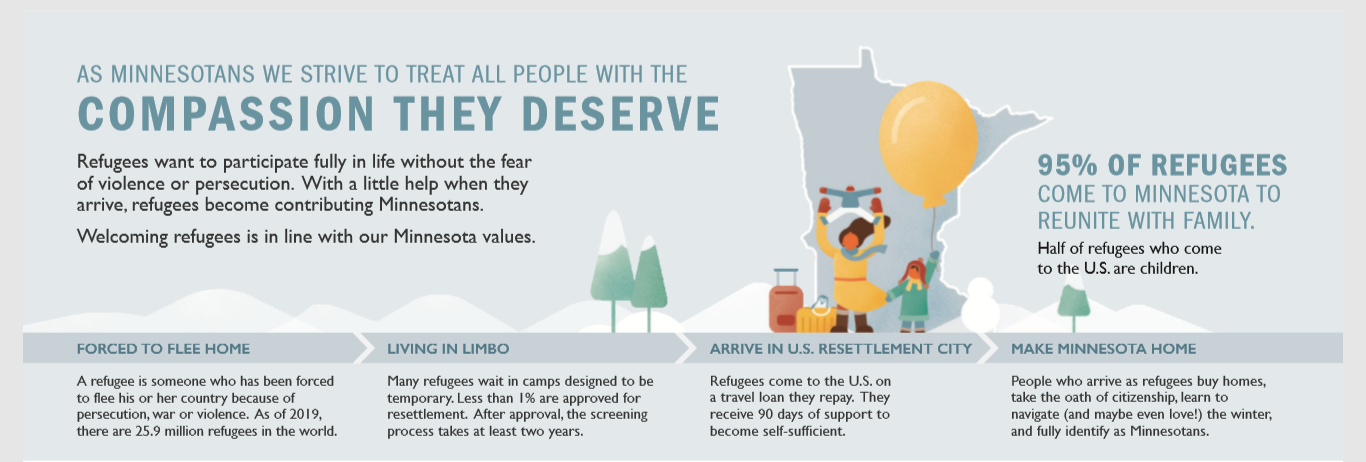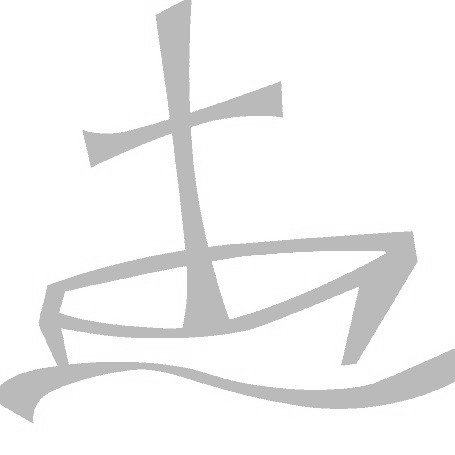About Refugees

About Refugees
People with refugee status have fled their home countries because of persecution based on their identity–race, religion, ethnicity, membership in a social group, or political opinion. They are unable to return to their homes for fear of further persecution, imprisonment or death. Refugees who resettle in the United States come by invitation of the US Department of State and have a direct path to US citizenship. They are authorized to work and remain in the US indefinitely.
Minnesota has long been for a leader in refugee resettlement, and has welcomed more than 100,000 refugees since 1970. Today, most refugee arrivals to Minnesota are from Burma, Somalia, Democratic Republic of Congo, Ethiopia and Ukraine. MCC Refugee Services has been welcoming refugees to Minnesota since 1984 through its partnership with Episcopal Migration Ministries. Refugees are survivors who bring hope and invaluable life experience to Minnesota.
After their arrival in the United States, people with refugee status quickly put down roots and become earners and taxpayers. They have high rates of entrepreneurship and fill critical gaps in the labor market. When refugees arrive, they may need some help getting on their feet, but long term they contribute more in taxes than they receive in benefits. Minnesotans with refugee status have $1.8 billion in spending power and 57% own homes. Refugees make communities stronger through their life experiences, cultural values, and economic contributions.
The Process of Refugee Resettlement:
After fleeing their country to escape persecution, many refugees seek safety in refugee camps or urban areas. Most refugees who come to resettle in the United States have spent years, or even decades, in refugee camps.
Once they have fled their country, individuals may apply for refugee status, which is conferred by the United Nations High Commission for Refugees (UNHCR) upon verification on their claims. The hope is that most refugees will eventually be able to return safely to their home country or settle in a neighboring region. When neither option is a possibility, families may apply for permanent resettlement in a third country. Fewer than half of 1% of refugees in the world have the opportunity to resettle each year.
The United States has long been the world’s leader in the resettlement of refugees; since 1980, our country has typically welcomed over 70,000 refugees each year. Refugees applying for resettlement in the United States face a long and complex process of interviews, security and health screenings, and cultural orientations before traveling to the US. For more detailed information on this process, we recommend the following resources:
Refugee Resettlement Process–courtesy of Refugee Council USA
Refugee Facts--courtesy of the UNHCR
Detailed Description of Refugee Security Screening--courtesy of the USCIS
Economic Impact of Refugees in America
This brief video does a great job of explaining the refugee vetting process.
Families resettled in the United States come by invitation of the US Department of State and have a direct path to US citizenship. They are authorized to work immediately upon arrival and remain in the US indefinitely. This is different from the temporary refuge sometimes granted to refugees in other countries.
The US Department of State contracts with non-profit organizations such as Episcopal Migration Ministries and MCC Refugee Services to welcome and resettle those granted refugee status. Located in cities and towns throughout the country, resettlement agencies resettle refugees into local communities, following national standards of services designed to help refugees integrate into their new communities and become self-sufficient. Resettlement agencies partner with local resources and faith communities to ensure a warm welcome to people with refugee status.


